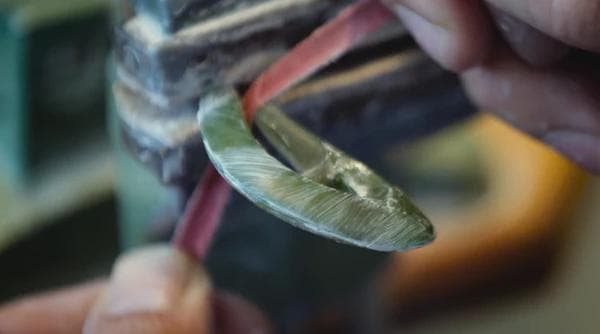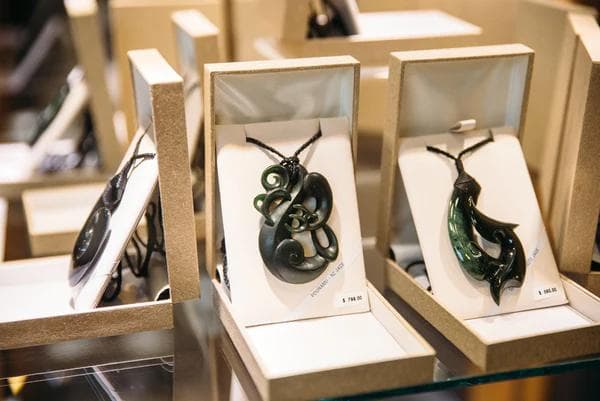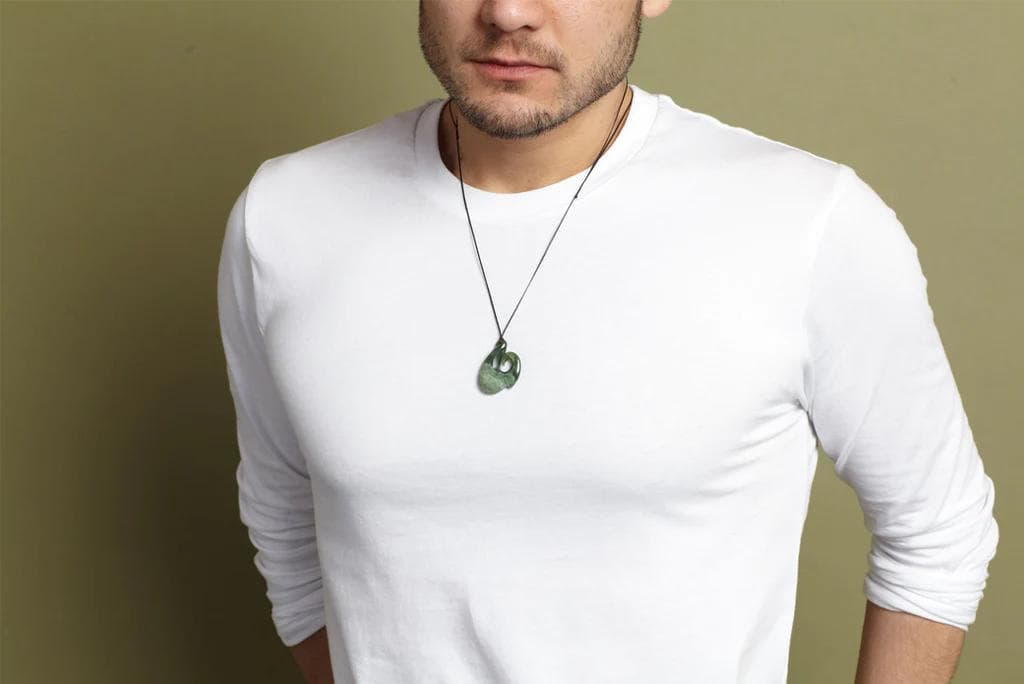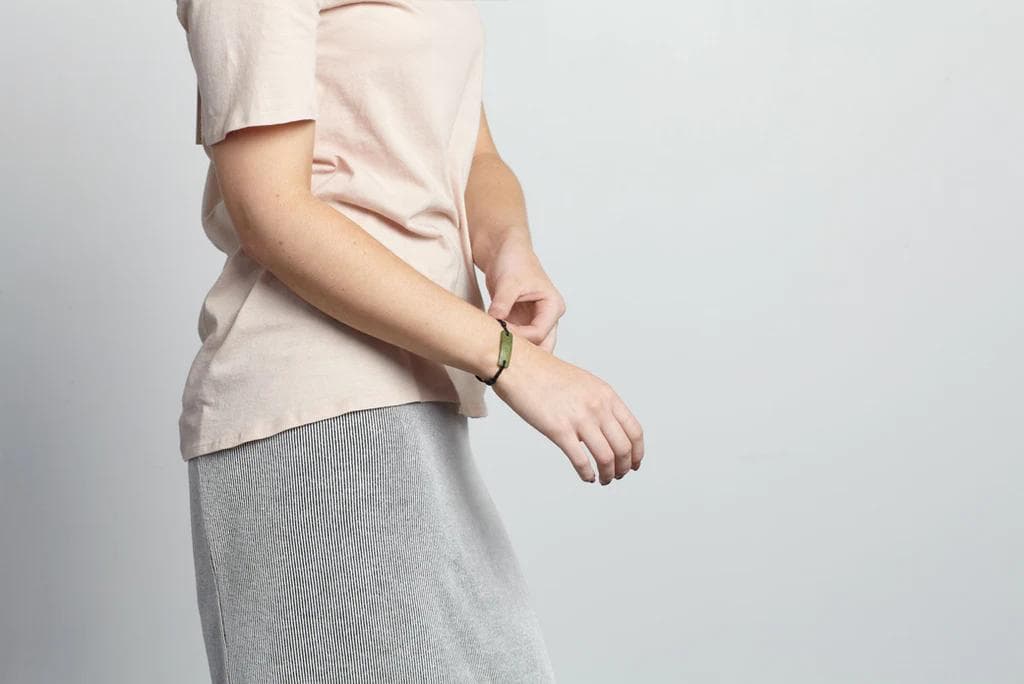14 Dec 2016

Jade (pounamu) is a precious stone in Māori history and thus has a long-standing tradition of being gifted to others. Throughout history it has been used to seal bonds; whether for friendship, relationships, peace, or to show gratitude and thanks.
It has also been noted that pounamu was a significant item used for exchange, which is how many tribes came to obtain the stone, despite being at a distance from the original source. We believe this has helped fuel the notion that jade shouldn’t be purchased for yourself but instead gifted to others, as it would result in giving the purchaser bad luck. It’s a topic that we feel is worth further exploration, as we want to respect the traditional beliefs of Māori, as well as explore the modern day customs that have come to fruition as a result of these historical ideologies.
The concept of gifting was central in the lives of Māori. It was a guiding principle and helped maintain the social ‘balance’ (mana) of individuals, communities and tribes. The process of this was shown through the gifts being given as a response to another persons doing or previous gift, each one proceeding being of greater significance or value. A material that was often used within this custom, due to its spiritual importance, was pounamu. It was always carved into traditional Māori symbols, each denoting their own spiritual significance to the wearer. Some of the most beautiful or significant carvings were also gifted to leading tribesmen, either for their strength or their spirituality. It was a high honour to receive a carved pounamu in this respect. Māori are very connected to the spiritual world and thus very connected to the earth around them. The creational story of Pounamu is that it is essentially the essence of a taniwha (spiritual water being) called Poutini, hence why greenstone has held such a high regard as a taonga (treasure) within Māori culture.
Typically, though certainly not limited to, the symbols that were worn by tribe leaders were the Hei Tiki; which is a significant symbol believed to resemble the son of Rangi and Papa (Sky Father and Earth Mother) and some were believed to be the dwelling place for ancestral spirits or vessels for the gods. Adornment was extremely important to Māori, objects made from wood, shell and bone, as well as pounamu were often worn for safekeeping. These items were hung around their neck or through their ears. It wasn’t until later during the “classical Māori period” that pounamu was the adornment of choice over these other materials. During this time new forms and designs were evolved and it became something considered more fashionable alongside being sacred and practical. This was around the time Māori had European contact and simultaneously jade took off as an enterprise. It was used in both jewellery and weapon form as an item to trade with the Europeans.

This is why pounamu carvings are considered a special and significant family heirloom. It's a strong and durable stone, so these carvings last for many generations, being gifted down the family line, emphasising the stone as a true taonga. This was the case in both Māori history as well as within modern day families. Many traditional items from history are still with the original family, having been passed down for many years. Historically, the pounamu carvings were often given names, as it helped personify the jade with the wearers of its past. The carvings reminded people of their ancestors and the life stories they created whilst wearing the stone.
Alongside gifting within their tribes and families, pounamu was also historically used when tribal wars were over, signifying a gift that was to seal the peace treaty between the two tribes.
Considering that gifting has a strong presence throughout pounamu's history, there is no wonder some modern day thinking is that it should only be gifted and that it would result in bad luck to buy jade for oneself. The thinking behind this concept of ‘bad luck’ is most likely due to the fragmented interpretations of the concepts tapu and mana, which dictate actions of respect and balance within society and if disregarded is hara, and has dire consequences. They are associated with the concept of blessing, as everything from the natural world was considered to be the child of Rangi and Papa (the sky father and earth mother) and thus tapu (sacred). Blessing objects are thought to neutralise (or separate) tapu or energy, and cut these natural objects off from their spiritual source, placing them firmly in the human world. This was so life could continue on safely without the people having fear of reprisal from the vengeful gods. Water was commonly used in tapu removal rituals. It came from the ‘wai tapu’ (tapu water) and would absorb the tapu from the object, carrying it away. As such, this has shaped modern superstitious beliefs around buying pounamu for oneself, with the ‘bad luck’ connotation being an incorrect distillation of these tapu ‘rights’ and the negative consequences if disregarded.

Furthermore, carving was traditionally a sacred (tapu) craft, therefore pounamu carving may be seen by some as equally sacred, due to the act itself as well as the stone. Because of this, some could come to the conclusion that by not having the stone blessed after it has been carved (the sacred craft) it would be hara, a violation, bringing a negative tapu to the wearer because it hasn’t been cut off (separated) from its tapu source(s).
A final reason this myth may have come to existence is because some believe pounamu stones have their own spirit, who in fact choose their owner, rather than the other way around.
Buying jade for yourself when the spirit of the stone had it’s eyes set on another, would anger the gods, creating negative energy and supposedly causing the wearer bad luck.
Our customers often note how specific stones call to them, so we do believe the stone can choose you to an extent. However, there is no traditional tikanga (teaching) that states this is due to a spirit within the stone or that choosing and purchasing a stone for oneself would result in a tapu of bad luck.
We believe that this idea of “bad luck” when purchasing jade for yourself has arisen through interpreting Māori concepts of taonga, tapu and traditions related to the stone through a modern lens. Just as we try to respect, understand and preserve Māori culture through our craft, society has adopted these perceived, culturally sensitive beliefs to show respect for Māori culture which is a positive thing.

That said, gifting greenstone is still a tradition today and is often used as a gift for significant milestones or to show someone your love and appreciation.
We personally see no reason why one shouldn’t purchase these special stones as a gift for themselves, especially if they feel a particular connection to a piece of greenstone or a design. It is important however that the individuals make up their own mind on the beliefs around gifting and the tapu nature of pounamu. If there is any uncertainty with this concept and others discussed in this article, consulting your local marae for further assistance could help in making a final decision to ensure it aligns with your personal beliefs and those of your local hapu.
See the below collections of jewellery, often purchased by greenstone enthusiasts for themselves as well as for their friends and family. These pieces are an essence of New Zealand identity and an ode to Māori culture and as such are hand carved with respect by both Māori and non-Māori artists alike.



